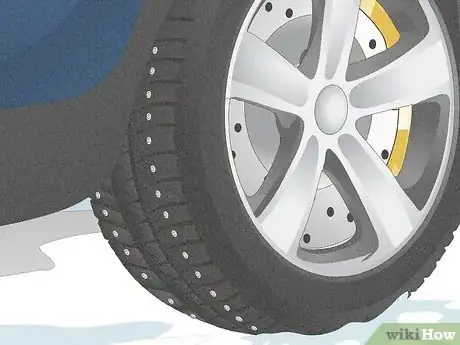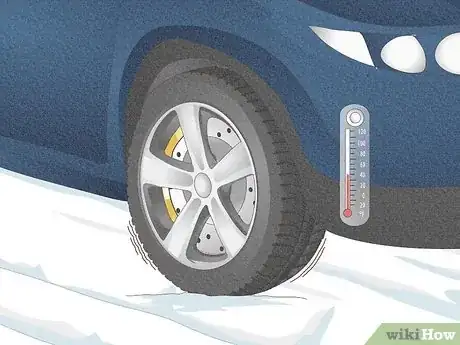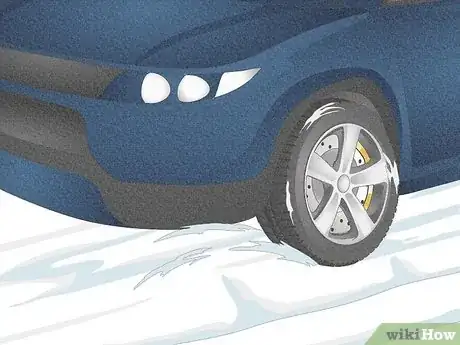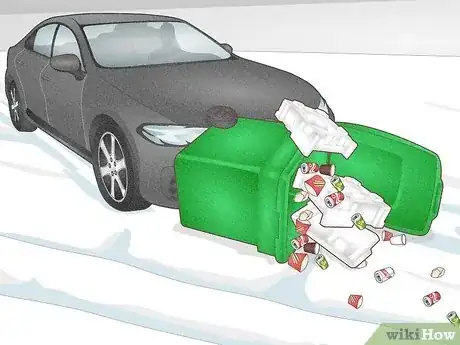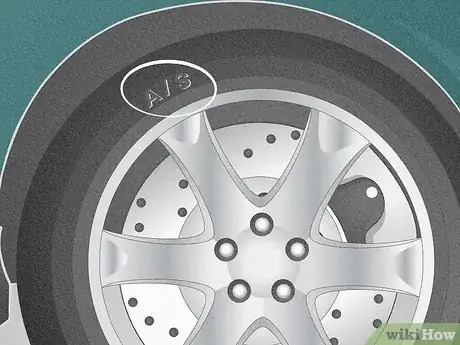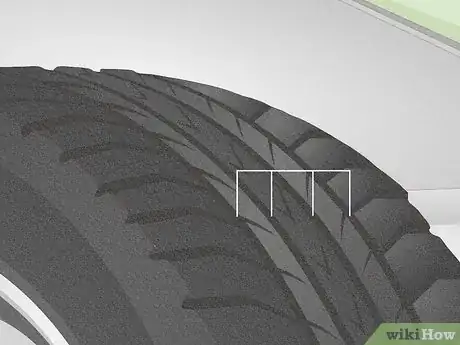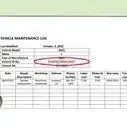This article was co-authored by wikiHow staff writer, Hannah Madden. Hannah Madden is a writer, editor, and artist currently living in Portland, Oregon. In 2018, she graduated from Portland State University with a B.S. in Environmental Studies. Hannah enjoys writing articles about conservation, sustainability, and eco-friendly products. When she isn’t writing, you can find Hannah working on hand embroidery projects and listening to music.
There are 8 references cited in this article, which can be found at the bottom of the page.
This article has been viewed 12,154 times.
Learn more...
As temperatures cool down and road conditions get worse, snow tires help keep you safe on the road. These tires, also called winter tires, give you traction when it’s snowy or icy. Whether you’re looking to buy snow tires or wondering if your current tires are snow tires, we’ve got you covered. In this article, we’ll tell you everything you need to know about snow tires to keep you safe this winter.
Steps
How do I know if I have snow tires?
-
1Snow tires have a mountain and snowflake symbol on the sidewall. Check out the sidewall on the outside of your tire (the area between the edge of the tread and the rim). Snow tires always have a small, 3-peak mountain symbol with a snowflake inside.[1] X Research source
-
2Look for the word “STUDLESS” on the sidewall. Some snow tires have studs, while others don’t. If your tires say STUDLESS on the side in all capitals, it means that they’re studless snow tires.[2] X Research sourceAdvertisement
-
3Check for metal studs in your tires. Just like the name suggests, studded snow tires use metal studs to give you the extra grip you need on the ground. Studded snow tires are common in areas that get snow and ice for long periods of time.[3] X Trustworthy Source Consumer Reports Nonprofit organization dedicated to consumer advocacy and product testing Go to source
- Keep in mind that most studded snow tires are only legal during the winter months. Using studded tires in dry conditions can tear up the road, and you may get a fine if you use studded tires during the non-winter seasons.
What do snow tires look like?
-
Snow tires have deep, square treads. A winter tire tread is the deepest of all tire treads. Usually, the tires will have square treads with small, zig-zagging sipes, or slits, on them.[4] X Research source
- Most snow tires are siped tires, but not all of them are. However, siped tires handle better in the snow, because the small slits give them more traction.
- When your snow tires have a tread of about 4/32 inches, it’s time to replace them. You can measure your tread depth with a tread depth measurement tool.
What are winter tires?
-
Winter tires, or snow tires, are tires rated specifically for snow and ice. Their deep treads give them stability. Winter tires are made specifically to handle cold temperatures, and they have better grip in the snow and during icy conditions.[5] X Research source
What’s the difference between snow tires and regular tires?
-
1Winter tires stay flexible below 40 °F (4 °C). All-season tires and summer tires are made for warmer weather, so they’re flexible in the heat. However, as temperatures start dropping, they tend to harden up and have less grip on the road. Winter tires are built to stay flexible, even in colder temperatures.[6] X Research source
-
2Winter tires have more stopping power in the snow. A winter tire’s deep tread gives it the braking power you need to stop in icy conditions. Since the deep treads allow for more traction, your car will stop faster and slip less in the winter.[7] X Trustworthy Source Consumer Reports Nonprofit organization dedicated to consumer advocacy and product testing Go to source
Best Picks for Snow Tires
-
Looking for a new set of snow tires? We’ve done the research for you. Make sure you buy the correct size tire for your car. You can find your tire size by checking the sidewall of your tires.[8] X Trustworthy Source Consumer Reports Nonprofit organization dedicated to consumer advocacy and product testing Go to source
- Best Snow Tire for Cars and Minivans: Bridgestone Blizzak WS90 Tire
- Best Snow Tire for Crossovers and SUVs: Continental VikingContact 7 Tire
- Best Snow and Ice Performance Tire: Falken Winterpeak F-ice 1 Tire
- Best Studded Snow Tire: AltiMAX Arctic12 Tire
- Best Snow Tire with a Warranty: Uniroyal Tiger Paw Ice & Snow 3 Tire
What’s the difference between all season and winter tires?
-
All season tires are not designed for deep snow or ice. The name “all season” is actually a bit of a misnomer—in fact, they should actually be called “3-season tires.” All season tires are great for wet and rainy conditions, but they tend to falter when it comes to the winter. Winter tires give you more grip in the ice and snow, and they’ll be more flexible during the colder months.[9] X Trustworthy Source National Highway Traffic Safety Administration U.S. government agency responsible for writing and enforcing Federal Motor Vehicle Safety Standards Go to source
How to Tell if Tires Are All Season
-
1The name has an “A/S” suffix. You’ll often hear all season abbreviated to “A/S” or “A.S.” If you’re buying tires with an “A/S” in the name, that means they’re all season tires, not winter or snow tires.[10] X Trustworthy Source Consumer Reports Nonprofit organization dedicated to consumer advocacy and product testing Go to source
-
2The tires have deep grooves down the center. All season tires are a combination of winter tires and summer tires. When you look at the treads of an all-season tire, you’ll notice the same square, zig zagging tread pattern as a winter tire. However, you’ll also see 3 to 4 deep grooves down the center of the tire. These grooves help give the tire traction during dry conditions, which is how you know it’s rated for all seasons, not just winter.[11] X Research source
- Seeing “M + S” on your sidewall? This acronym stands for “mud and snow.” An “M + S” symbol usually means that the tire is an all season tire, not a snow tire.
You Might Also Like
 Find Your Paint Code On Your Car Fast
Find Your Paint Code On Your Car Fast


 How to Roll Down the Windows With Your Key Fob
How to Roll Down the Windows With Your Key Fob

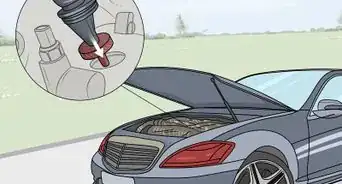





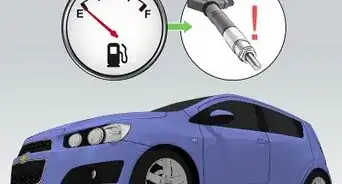 Running Out of Gas: What Happens to Your Car & How You Can Get Help
Running Out of Gas: What Happens to Your Car & How You Can Get Help

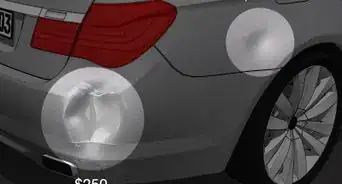 How to Pull a Dent Out of a Quarter Panel
How to Pull a Dent Out of a Quarter Panel
References
- ↑ https://www.nzta.govt.nz/assets/resources/winter-tyres/docs/winter-tyres-pamphlet.pdf
- ↑ https://www.nzta.govt.nz/assets/resources/winter-tyres/docs/winter-tyres-pamphlet.pdf
- ↑ https://www.consumerreports.org/cro/cars/do-i-needed-studded-snow-tires
- ↑ https://www.nzta.govt.nz/assets/resources/winter-tyres/docs/winter-tyres-pamphlet.pdf
- ↑ https://www.kbb.com/car-advice/winter-tires-worth-cost/
- ↑ https://www.themechanicdoctor.com/buying-winter-tires-that-suit-you/
- ↑ https://www.consumerreports.org/cro/tires/buying-guide/index.htm
- ↑ https://www.consumerreports.org/products/tires-30847/winter-snow-tire-31107/view2/
- ↑ https://www.nhtsa.gov/equipment/tires
About This Article



